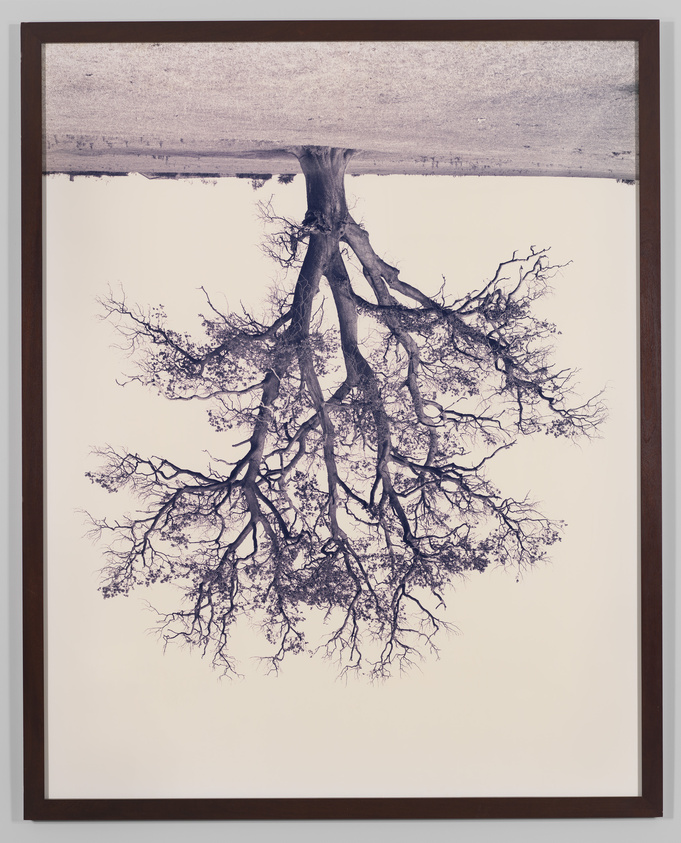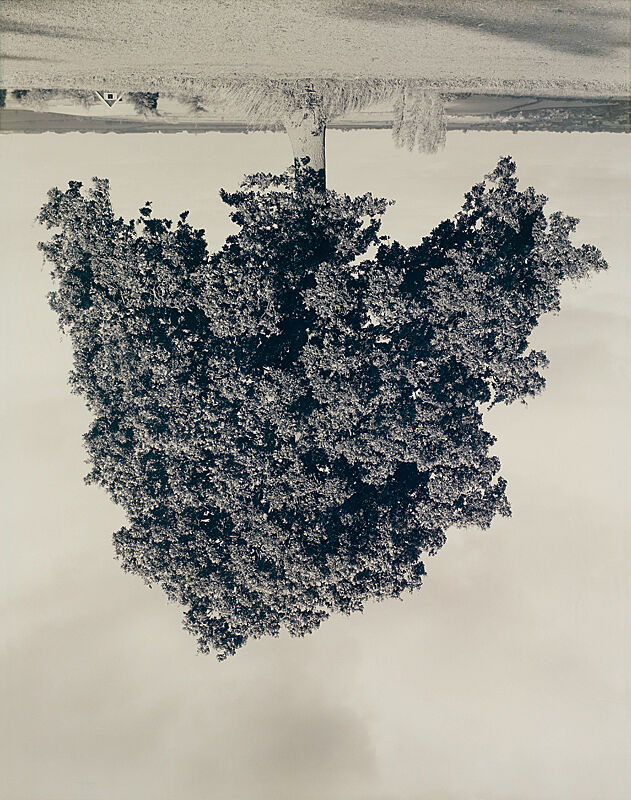Rodney Graham, Oak, Banford, 1990
Mar 3, 2011
0:00
Rodney Graham, Oak, Banford, 1990
0:00
Narrator: In 1990, Canadian artist Rodney Graham ventured into the English countryside to photograph a series of lone, iconic oaks trees. The resulting pictures are traditionally composed: in each, an isolated tree stands against a low horizon line, filling the center of the picture. But Graham displayed the photographs with the tree inverted, creating an image that is both familiar and confusing. The upside-down tree becomes an abstraction: gnarled branches turn into complex networks of lines enclosing shapes of light and air. A band of earth weighs down the top of the composition, while the bottom is empty, defying our sense of gravity. Graham’s trees, grand, solitary, and silent, photographed in black and white, have a melancholy quality—as if they come from some strange, bygone place and time.
In fact, images pass through our eyes upside down, and then are corrected by the brain. By dismantling the mechanics of sight, Graham raises questions about how we learn to see and interpret the world. His images remind us that no artistic representation is, in fact, “natural.”


